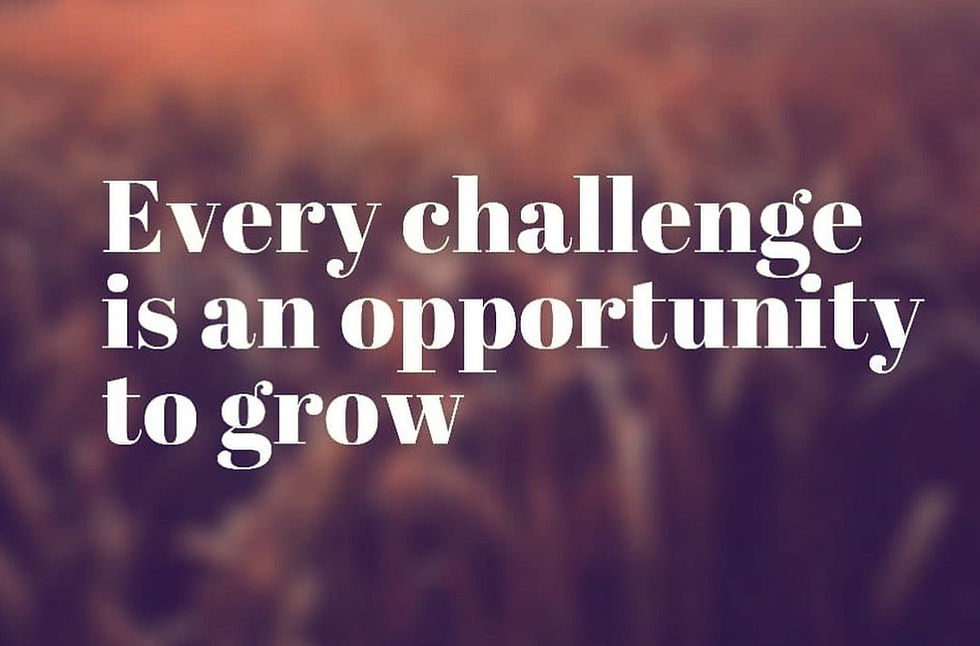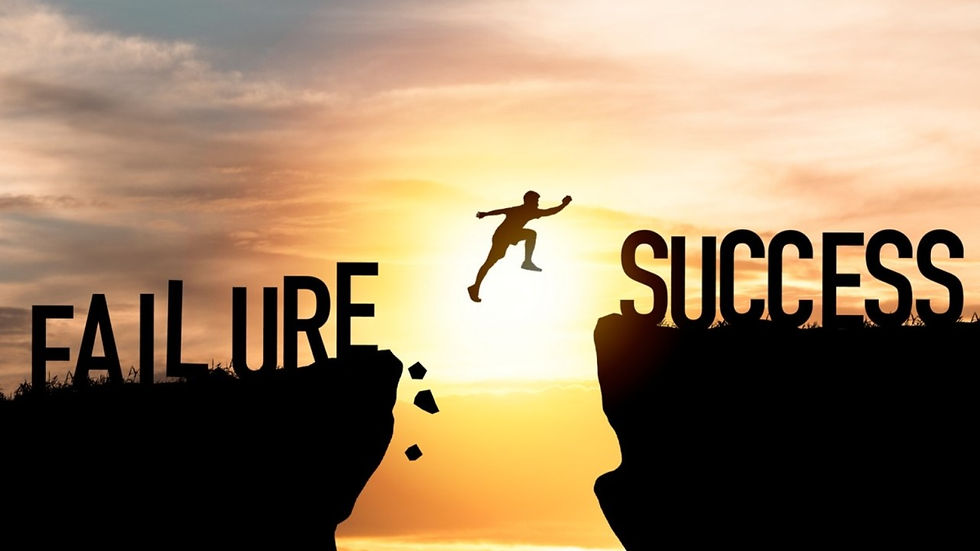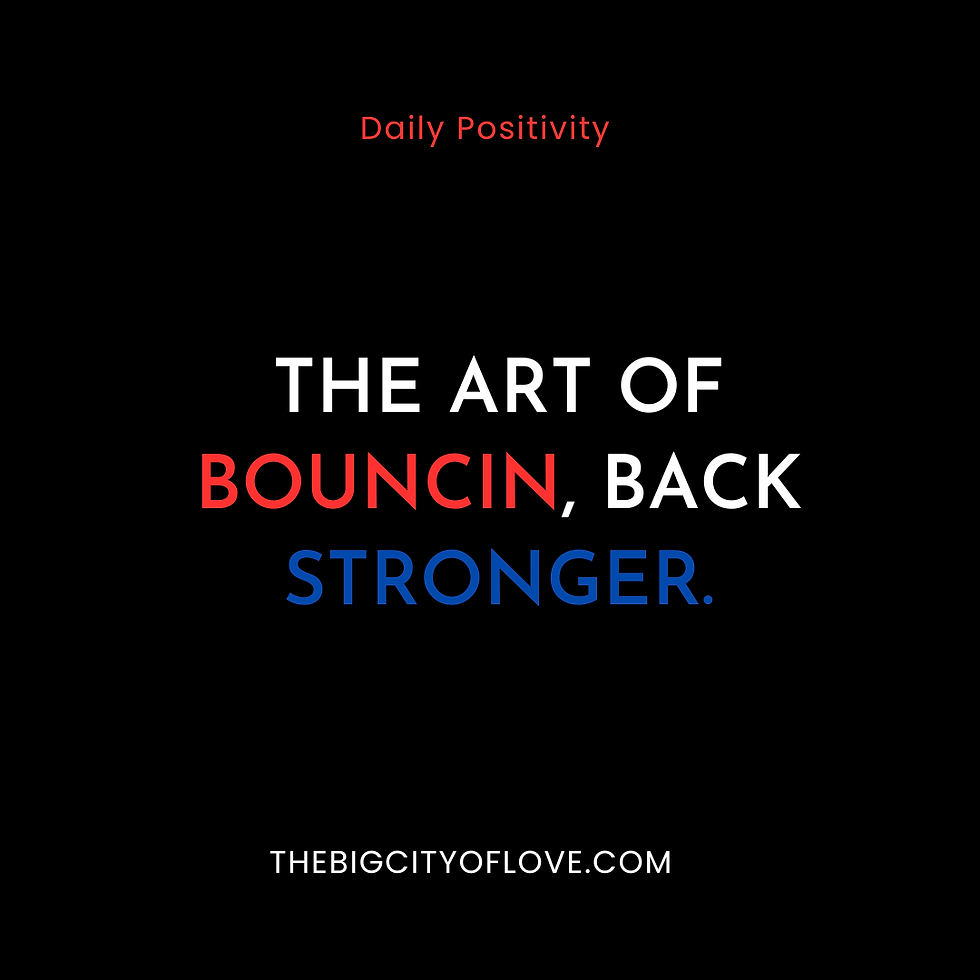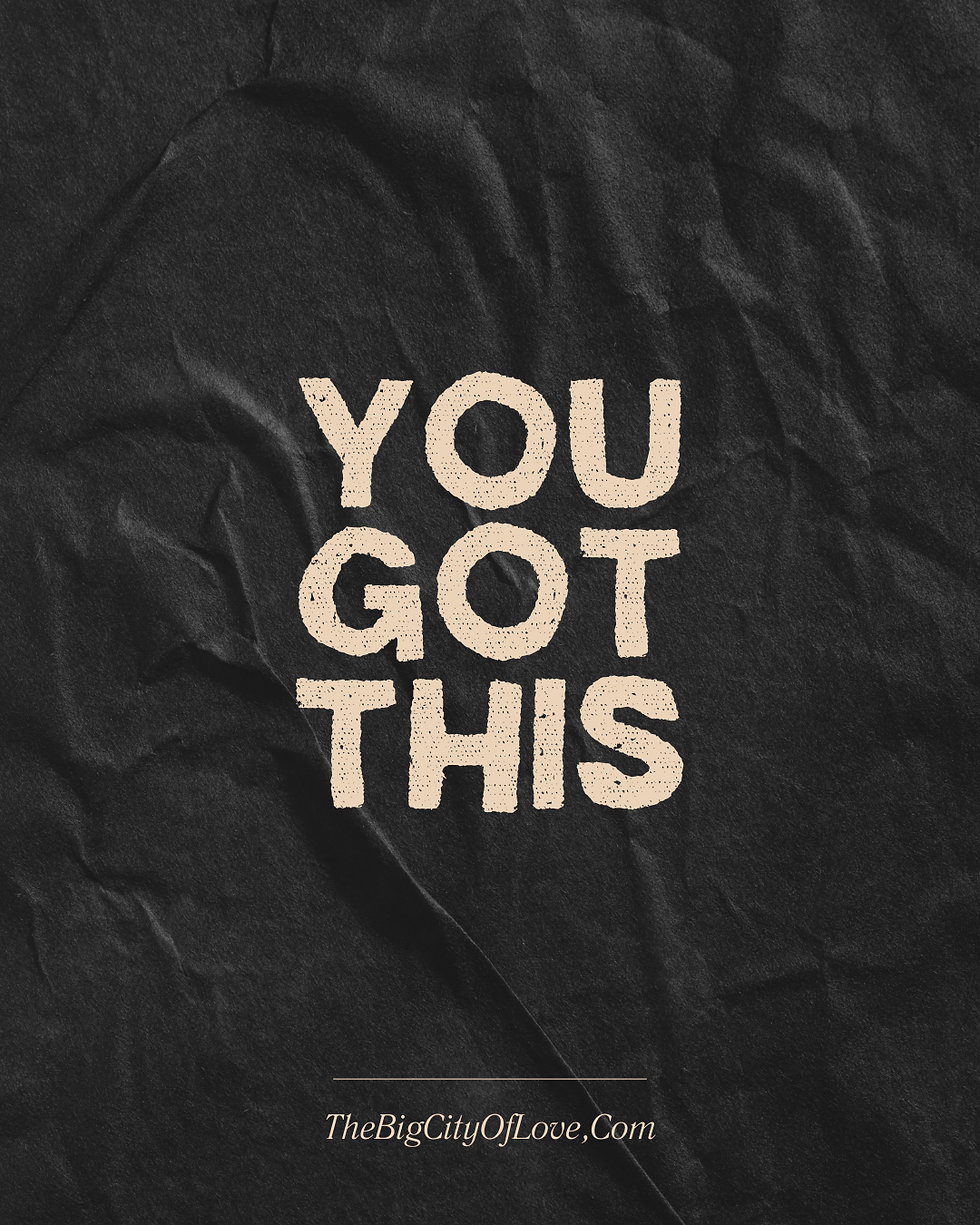"Failure as a Stepping Stone: Why Every Setback Is an Opportunity for Growth"
- Ron Spates

- Sep 5, 2024
- 13 min read
"Failure as a Stepping Stone: Why Every Setback Is an Opportunity for Growth"
Our failures often seem louder than our successes. But in those failures, we find a chance for big changes. Having a growth mindset means seeing every defeat as a chance to grow stronger. History, the Bible, and our own stories show us that learning from our mistakes leads to amazing comebacks.

Proverbs 24:16 tells us that falling is part of life, but we don't stop there. We start again, stronger. Stories like Peter's denial and Joseph's slavery show us the power of getting back up. When we see obstacles as guides, not walls, they help us grow and succeed.
Seeing the good in tough times takes faith and believing in a better future. It's about having a purpose that goes beyond today. This purpose is about growing and finding redemption.
Key Takeaways
Embracing a growth mindset can transform setbacks into opportunities for personal development.
Resilience in tough times is cultivated by learning from setbacks and navigating adversity with faith.
Biblical narratives like those of Peter and Joseph serve as inspiring reminders that failures can lead to greater purpose.
Viewing challenges as lessons enables individuals to harness the benefits of each setback for future success.
Every fall and rise presents a chance to align more closely with one’s path of spiritual growth and prosperity.
The Paradox of Failure and Success
At the heart of personal and professional growth lies a surprising truth: success through failure. This idea says that our setbacks are key steps on the path to success. By facing the challenges of overcoming failure, we can use our experiences to grow.

The path to success through failure is full of lessons that change how we face challenges. It teaches us to be resilient, clear in our goals, and strong in our resolve. These lessons are crucial for both personal and professional growth. Every story of success has chapters of hard times and never giving up, showing how failure helps make big achievements.
Understanding this paradox means seeing failure as a step before success, not against it. It's about changing how we view every failed try as a step towards reaching our goals.
Being able to think deeply about our actions and results without excuses is key. This reflection helps us learn and grow, turning what seemed like a dead-end into a path to bigger achievements. By accepting failure, we open ourselves up to overcoming failure with new insights and strong determination.
Identify and analyze failures to extract tailored lessons.
Implement changes based on these insights to improve future strategies.
Persevere through challenges with an adaptive and growth-oriented mindset.
As we move through our work and personal lives, the idea of success through failure becomes more than a strategy. It becomes a way of thinking that pushes us forward. Each step back gives us stronger ground for the next step forward.
Redefining Failure in Personal Growth
In personal and professional growth, failure often gets a bad rap. But, with a growth mindset, we can see failure in a new, positive way. Like dolphins adapting to survive, we can learn from each failure to grow.
Shift the Perspective on Setbacks
Changing how we view setbacks is key. Seeing obstacles as chances rather than barriers changes how we tackle challenges. This shifting perspective on setbacks means finding lessons in every experience. Each failure teaches us about resilience and how to adjust.
The Role of Mindset in Overcoming Adversity
Having a strong growth mindset helps us get through tough times. This mindset believes we can improve our skills and smarts with hard work and persistence. It's about knowing that getting better takes effort and learning from our mistakes. With this mindset, we're ready to try new things and adapt.

A growth mindset turns failures into opportunities for growth. It sees each failure as a step in learning, not a sign of failure. With this mindset, every challenge is a chance to grow and discover more about ourselves.
Learning from Failure: Stories of Resilience
The journey of personal growth often involves overcoming obstacles. When we learn from failure, we find a path to success that motivates and teaches us. We'll explore personal stories of bouncing back, showing how these experiences make us stronger and wiser.
History and stories from the past teach us that failures are chances for deep personal change. Stories like those of Peter and Joseph show us how faith and hard work can change things for the better.
From Denial to Pillar of Faith: Peter's story from betrayal to being a key figure in his community shows the strength of resilience and redemption.
Rise Above Circumstances: Joseph’s story of rising to power despite his early troubles shows the importance of keeping hope and integrity.
These stories are more than just old tales. They offer us a way to see failures as chances to grow. By learning from these stories, we can find the motivation to turn failures into steps towards success.
Looking at personal stories of overcoming challenges, whether from history or our own lives, gives us advice and hope. It shows us that resilience can really change things. Starting on a path of resilience means looking inward, learning, and having the courage to keep going, even when it's hard.
Talking about resilience isn't about avoiding failure. It's about using it to our advantage. Every story and setback teaches us something that helps us move forward and up.
Building a Resilient Mindset in Tough Times
Life is full of surprises, and having a resilient mindset is key. It's important to learn how to cope and make a personal resilience plan. These steps help you face challenges with strength and grace.
Developing Coping Strategies
Building strong coping strategies is vital for dealing with stress and setbacks. It means knowing what triggers stress and finding healthy ways to react. Techniques like mindfulness, solving problems step by step, and getting support from friends can help keep your mind stable during tough times.
Creating a Personal Resilience Plan
Having a personal resilience plan helps you get ready for what's ahead. It's about setting achievable goals, staying healthy, and keeping a positive attitude. By always working on yourself and reflecting on your progress, you make resilience a big part of who you are. This way, you can turn challenges into wins.
Coping Strategy | Benefits |
Mindfulness Meditation | Reduces stress, enhances overall emotional health |
Physical Exercise | Improves mood, reduces anxiety and depressive symptoms |
Building Social Connections | Provides emotional support and practical help during tough times |
Failure as a Stepping Stone
Learning to see failure as a stepping stone is key for anyone wanting to turn setbacks into wins. It means seeing each failure as a chance to learn and grow.
When we accept failure, we open up new possibilities and improve our plans for the future. This mindset is vital for moving from failure to success.

Accepting failure to understand underlying causes rather than merely reacting to results.
Implementing the lessons learned towards enhancing personal or organizational strategies.
Continually adapting, which empowers perseverance and innovation.
This approach helps us get past hurdles and builds a strong, flexible mindset. These are the qualities that lead to lasting success.
Challenge | Lesson | Application |
Project Failure | Improvement in project management and risk assessment | Integration of robust project tracking tools and risk mitigation strategies in new projects |
Missed Target | Need for clearer goal setting and realistic benchmarking | Adjustment of goals and introduction of interim milestones for better monitoring |
Ineffective Marketing Campaign | Greater focus required on audience analysis and engagement tactics | Application of targeted marketing strategies based on refined audience insights |
Looking back at past failures with a positive outlook and embracing failure as a stepping stone can really boost our growth. It turns each mistake into a key moment for learning and progress.
Overcoming the Fear of Failure for Success
Many people face challenges on their path to personal growth, like fear of failure. Seeing failures as chances to grow, not just as obstacles, can lead to big achievements. This change in view is key to overcoming fear of failure.

It's important to understand how to beat the fear of failure. This means changing how we think. We should see failures as chances to learn and get better, not as signs of our worth.
Standard Reaction | Transformed Reaction |
Viewing failure as a negative reflection of one's abilities | Seeing failure as a chance to learn and improve |
Fear of criticism and rejection | Welcome feedback as a tool for further personal growth |
Avoiding challenging tasks | Embracing challenges as opportunities to succeed |
Beating the fear of failure takes time, effort, and support. It's about valuing learning over fear and growth over comfort. This approach shows us that we can all go beyond what fear limits us.
To make this change, we need to tackle our fears step by step. By looking beyond immediate failures, we create a space where personal growth is ongoing.
The Science Behind Growth from Setbacks
Learning how to grow from setbacks starts with understanding the science of growth. This means looking at how our brains can change and make new connections as we live. This helps us learn from our mistakes and get better at facing challenges.

Humans, like animals, can keep learning and adapting to new situations. We can use this idea to improve how we deal with mistakes and failures. This skill is important for growing personally and doing well in a fast-changing world.
Component | Role in Learning from Setbacks | Impact on Personal Growth |
Neuroplasticity | Allows brain to reconfigure itself in response to new learning experiences. | Increases mental flexibility and adaptability. |
Risk Evaluation | Encourages analyzing past actions and deciding better approaches. | Enhances decision-making skills and strategic thinking. |
Adaptive Learning | Facilitates the adoption of new strategies based on past setbacks. | Fosters resilience and perseverance in face of challenges. |
By working with our experiences and learning from our failures, we get better at solving problems. We also get smarter emotionally, which helps us grow as people. The science of growth says every experience, even the tough ones, helps us grow and change.
So, by learning from setbacks, we turn mistakes into chances for success. This mix of science and real-life learning helps us grow in a lasting way.
Turning Failure into Opportunity
Every setback in a professional setting is a chance to change and grow. By looking at what went wrong before, people and teams can make their plans better. This helps them bounce back stronger and think more creatively. It's all about analyzing setbacks and applying learned lessons to new projects.

Analyzing Setbacks for Key Lessons
Being able to break down a failure helps spot what needs fixing and find patterns that slow success. It's key to look at these failures with a clear head, focusing only on the facts.
Applying Learned Lessons to Future Endeavors
After figuring out the lessons, it's time to use them in new projects or plans. This might mean changing how things are done, using new tools, or reshaping the team. The goal is to make these changes work well to avoid past mistakes and improve future results.
Turning failure into opportunity takes a deep commitment to learning and adapting. It's a cycle of getting better that prepares people and companies for future hurdles. It also keeps them growing and improving.
The Art of Bouncing Back Stronger
The journey of bouncing back from failure is full of twists and important lessons. It's about using challenges to build resilience. This resilience comes from facing and learning from each obstacle.

Here are some key strategies for bouncing back from failure:
Reflection and Acknowledgment: Understanding what went wrong is the first step to success.
Proactive Learning: Learning from past failures makes us stronger for the future.
Strategic Planning: Changing plans after setbacks leads to better goal achievement.
Support Systems: Having a strong support system is key to bouncing back stronger.
Organizational culture also plays a big part in building strength from setbacks. A culture that values resilience and open failure discussions helps everyone overcome challenges better.
Setbacks are part of life, but turning them into opportunities is an art. Building strength from setbacks means not just recovering but growing into a stronger, wiser individual or team. This prepares us for the future's challenges.
Inspiring Examples of Success through Failure
The path to success is often filled with failures. In fields like technology and sports, stories of people and groups turning early failures into huge inspiring stories of success show the power of learning from failure.
Technology Giants: Today's big companies once faced big challenges that could have ended them. Their stories of coming back are not just about making money. They're about changing and growing after big failures.
Automotive Innovations: In cars, some well-known brands went bankrupt and almost disappeared before coming back stronger. They turned dark times into huge successes.
Sporting Legends: In sports, many athletes beat personal and professional challenges. They learned important lessons from their losses to win titles and get famous worldwide.
These stories show more than just success. They show the strength and willpower of these people. Each tale proves that setbacks can lead to even bigger wins if you keep going and don't give up.
Key Takeaway: Seeing failure as a way to get ahead is key to stories that inspire and teach us. It's the bravery to keep going, even when it's hard, that turns possible failures into great successes.
Failure as Opportunity: Innovate and Evolve
Seeing failure as opportunity is more than just a saying. It's a key strategy for self-improvement and innovation. It means looking at each failure as a chance for new ideas and growth. This view is vital for those who want to succeed in a fast-changing world.
Personal and professional growth often means trying new ways after initial failures. Seeing these failures as important learning moments can open up new possibilities. It promotes a culture where trying new things and learning from failures is seen as a way to find new ideas and innovate.
Turning failure into an opportunity also means being resilient and open to constant learning and change. Here’s how to make this idea work:
Identify the Lessons: Every failure teaches something new. Find these lessons to avoid future failures.
Encourage Open Dialogue: Make places where sharing failures is seen as a way to grow and innovate together.
Foster Agility: Change and improve strategies quickly based on what you've learned, to stay ahead in innovation.
Seeing failure as a way to innovation helps people and companies move forward. It leads to a world full of chances for growth and constant self-improvement. So, turning failures into chances for future wins is key in today's world of personal and professional growth.
Embracing the Journey: Every Setback as a Lesson
Life is full of challenges and setbacks. It's important to see each one as a chance to grow. When we face obstacles, we should learn from them and find meaning. This way, we make the most of every setback as a lesson.
Finding Meaning in the Midst of Challenges
Looking for meaning in tough times changes us. It helps us see the lessons in every hard experience. This new view lets us move forward, stronger and wiser.
Embracing Growth at Every Step
Embracing growth means seeing every challenge as a way to get better. It's about learning more about ourselves and the world. This mindset helps us keep improving and succeeding in all we do.
By seeing every setback as a lesson, we become more resilient and wise. Finding meaning in challenges and always embracing growth shapes our story of success. It's not about avoiding failure, but how we handle it.
Nurturing Growth Mindset for Long-Term Success
The journey to long-term success is shaped by a growth mindset. It's not just about thinking positively. It's about believing that skills and smarts can grow with effort and hard work.

Learning how to grow your mindset is key to long-term success. Here are some strategies to help you get there:
See challenges as chances to learn and get better.
Keep going when things get tough and see failures as steps to growth.
Look for feedback and use it to improve.
Celebrate others' wins to help everyone feel hopeful.
By following these tips, you can build a strong mindset. This mindset is vital for personal and professional growth. It's what keeps you moving towards long-term success.
"In a growth mindset, challenges are exciting rather than threatening. So rather than thinking, oh, I'm going to reveal my weaknesses, you say, wow, here's a chance to grow." - Carol S. Dweck
These strategies will boost your personal growth and help others reach their full potential. The way to long-term successis made up of daily choices. These choices are guided by the mindset you choose to have.
Conclusion
Our journey in personal development often hits roadblocks, but these should boost our motivation, not bring us down. Failure is key to success, not its opposite. Turning setbacks into steps forward helps us grow stronger and smarter.
Every challenge we face helps us build resilience and keeps us moving. Our responses to these hurdles shape our growth. When we find motivation after failure, it pushes us to do more than we thought possible.
In the end, let's remember how crucial failure is in our stories of growth. It's a story of overcoming obstacles and always striving to be better. By learning from our failures, we get closer to reaching our true potential. Failures are just steps on the path to excellence, and our determination is what makes us successful.
FAQ
How can I shift my perspective on failure?
View each failure as a chance to learn. Adopt a mindset that sees failure as a step towards growth and resilience.
What role does mindset play in overcoming adversity?
Mindset is key when facing tough times. A growth mindset means facing challenges head-on, learning from them, and keeping going. It helps you bounce back from failures and see them as part of growing.
How can personal stories of resilience motivate after failure?
Personal stories of overcoming challenges inspire and motivate. They offer comfort and lessons on how to get through hard times.
What are some effective coping strategies for tough times?
To cope, reflect on your feelings, reach out to friends or professionals, stay active, practice mindfulness, and focus on solving problems.
What should a personal resilience plan include?
A resilience plan should have clear goals, a support network, a positive outlook, stress management skills, and adapting to new challenges.
What are practical steps to turn failure into success?
To turn failure into success, understand what went wrong, take responsibility, learn from mistakes, and apply those lessons to your future actions.
How can I overcome the fear of failure and pursue success?
Overcome fear by seeing failure as a learning chance. Focus on growth and be prepared for risks. Keep a positive outlook on the future.
What does science say about learning from setbacks?
Science says our brains can grow from setbacks through neuroplasticity. Facing challenges and learning from errors helps us think and solve problems better.
How do I analyze setbacks for key lessons?
Look at setbacks objectively, find out what caused them, and think about what you could do differently. This helps you learn more effectively.
How should I apply lesson-learned to future endeavors?
Use what you've learned to set new goals and strategies. Adjust your approach based on what you've discovered. Avoid making the same mistakes again.
What does it mean to bounce back stronger from failure?
Bouncing back stronger means recovering from failure and growing from it. It means using setbacks to make you more resilient and knowledgeable.
How can learning from failure lead to success?
Learning from failure makes you adaptable, innovative, and aware of your strengths and weaknesses. It helps you improve and can lead to big achievements.
How can I use failure as an opportunity to innovate and evolve?
Use failure to explore new ideas and approaches. It can spark creativity and lead to better solutions and more resilient systems.
How can I find meaning in my challenges?
Reflect on what challenges teach you about your values and strengths. See how they shape your character and guide you towards your goals.
Why is it important to embrace growth with every setback?
Embracing growth with setbacks means not wasting any experience. It helps you evolve, tackle future challenges better, and improve your resilience.
How can I nurture a growth mindset for long-term success?
Nurture a growth mindset by always learning, being open to feedback, and facing challenges. Celebrate your progress and aim to improve your skills.




Comments